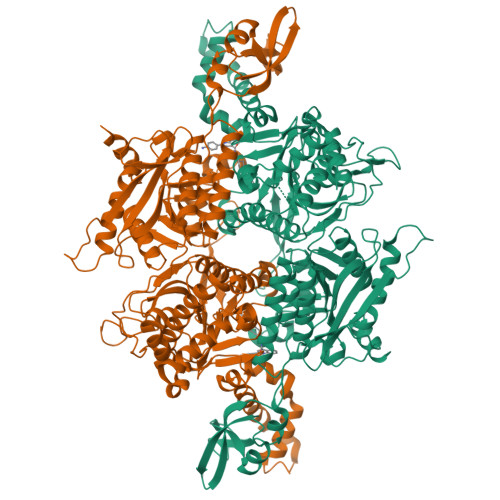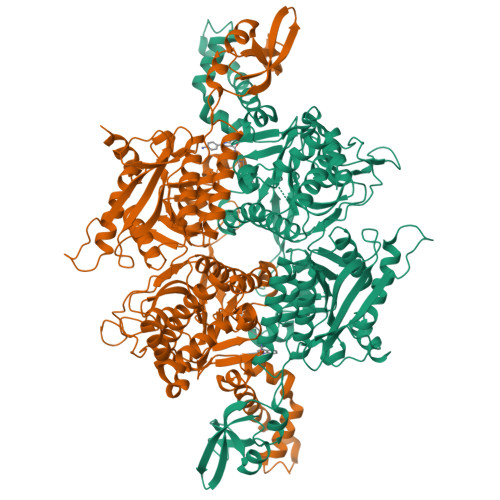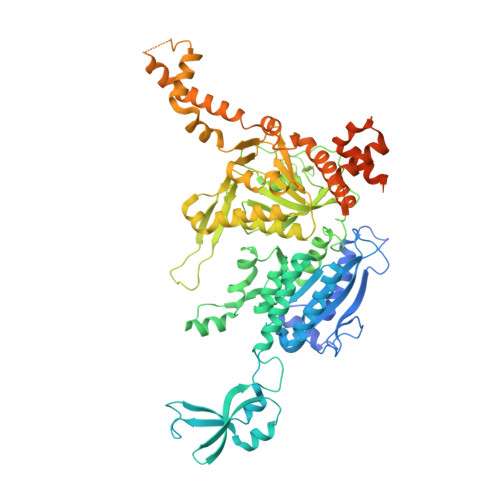Design of Small Molecule Inhibitors of Acetyl-Coa Carboxylase 1 and 2 Showing Reduction of Hepatic Malonyl-Coa Levels in Vivo in Obese Zucker Rats.
Bengtsson, C., Blaho, S., Saitton, D.B., Brickmann, K., Broddefalk, J., Davidsson, O., Drmota, T., Folmer, R., Hallberg, K., Hallen, S., Hovland, R., Isin, E., Johannesson, P., Kull, B., Larsson, L., Lofgren, L., Nilsson, K.E., Noeske, T., Oakes, N., Plowright, A.T., Schnecke, V., Stahlberg, P., Sorme, P., Wan, H., Wellner, E., Oster, L.(2011) Bioorg Med Chem 19: 3039
- PubMed: 21515056
- DOI: https://doi.org/10.1016/j.bmc.2011.04.014
- Primary Citation of Related Structures:
2X24 - PubMed Abstract:
Inhibition of acetyl-CoA carboxylases has the potential for modulating long chain fatty acid biosynthesis and mitochondrial fatty acid oxidation. Hybridization of weak inhibitors of ACC2 provided a novel, moderately potent but lipophilic series. Optimization led to compounds 33 and 37, which exhibit potent inhibition of human ACC2, 10-fold selectivity over inhibition of human ACC1, good physical and in vitro ADME properties and good bioavailability. X-ray crystallography has shown this series binding in the CT-domain of ACC2 and revealed two key hydrogen bonding interactions. Both 33 and 37 lower levels of hepatic malonyl-CoA in vivo in obese Zucker rats.
Organizational Affiliation:
AstraZeneca Research and Development, Mölndal, Sweden.



















